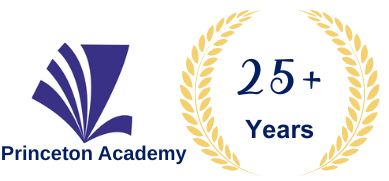📌Introduction
This program equips participants with practical skills to manage inventory and store operations efficiently in the era of Supply Chain 4.0. Covering everything from modern storage practices and documentation to safety protocols and dashboard-based reporting, the course bridges traditional methods with emerging technologies like IoT, AI, and Blockchain to drive accuracy, safety, and performance in stores management.
🎯 Course Objectives
📦 Smart Inventory Planning
🏭 Warehouse Setup & Optimization
📋 Digital Documentation & Coding
📊 Dashboards & Performance Tracking
⚙️ Material Handling & Safety
Supply Chain 4.0
- Block-chain, IoT and AI and their impact on the supply chain
Managing the Stores Function Efficiently
Stockyard and Warehouse Setup & Operations
- Outdoor storage: Risks, layout planning, and material protection
- Manual vs. powered material handling: Tools, trolleys, forklifts
- Training staff in safe equipment usage
- General storage and measuring equipment—use and upkeep
Inventory Receiving, Documentation and Storage
- Goods receiving procedures: Inspections, checklists, and GRNs
- Storage categorization: Raw material, spares, finished goods
- Order picking techniques: FIFO, LIFO, batch control
- Packaging, palletization and safe racking practices
- Preventing spoilage, leakage and breakage—causes and remedies
Ordering, Stock Levels and Inventory Planning & Control
- Stock ordering cycle: Requisition, approval, lead time management
- Setting reorder levels and safety stocks
- ABC analysis, EOQ and demand forecasting
- Procurement coordination with finance and operations
Inventory Coding, Documentation & Records
- Inventory identification systems: SKUs, barcodes, QR codes
- Creating practical, user-friendly coding systems
- Physical vs. digital stock records – best practices
- Importance of accuracy and audit-readiness
- Report generation: Stock status, slow movers, stock age
Health, Safety & Accident Prevention
- Legal and operational responsibilities of store managers and staff
- Workplace safety standards: Protective clothing, equipment and training
- Safety audits, safety signage and incident protocols
Reporting & Dashboards for Store Management
- Store managers should have a practical reporting framework to track, control, and optimize store operations through relevant dashboards and analytics
- Stock Ledger vs Physical Count Variance Report
- Fast-Moving vs Slow-Moving Items Dashboard
- Dormant & Obsolete Inventory Report (Ageing Analysis)
- Out-of-Stock (OOS) Report by Location and SKU
- Floor vs Racking Occupancy Dashboard
- High-Value SKU Movement Tracker
- GRN vs Gate Entry vs Physical Receipt Mismatch Report
- Material Handling Time per Inward/Outward Cycle
Handling Critical Issues in Stores
- Managing audits, stock mismatches and physical losses
- Fast-moving vs. non-moving inventory management
- Emergency response (fire, flood, strikes, shutdowns)
COURSE SCHEDULE & FEES
The Lalit
Training Session
Mumbai
In-Person Training
14750
Inclusive of all taxes
Holiday Inn, Aerocity
Training Session
Delhi
In-Person Training
14750
Inclusive of all taxes
Holiday Inn
Training Session
Bangalore
In-Person Training
14750
Inclusive of all taxes
DOWNLOAD COURSE CONTENTS
Please click the button below to download the course content. You'll need to provide your contact information to receive the document.
INCOMPANY/GROUP TRAINING REQUEST
Why Choose Our Incompany Program?
- 🎯 Tailored content specific to your business goals
- 👥 Train entire teams together, saving time and cost
- 📍 Delivered at your location or virtually
- 📅 Flexible scheduling to suit your timelines
- 📈 Increase retention and application of skills
